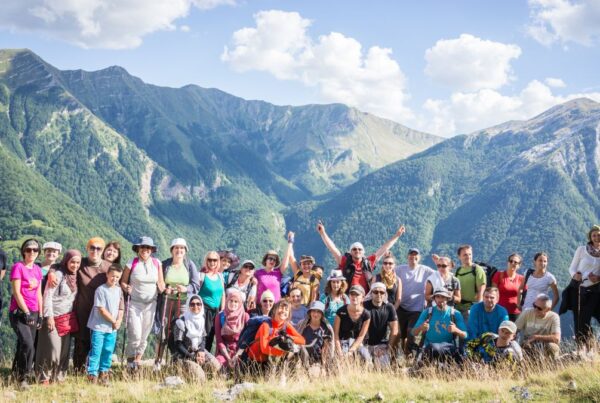In this short guide, I want to lay out some key tourism marketing strategies for tour operators, retreat centers and retreat leaders who offer transformative travel experiences for environmentally-conscious travellers.
The global ecotourism market was valued at $193.62 billion dollars in 2022 and it is anticipated to be one of the fastest-growing areas of the world economy at a Compound Annual Growth Rate (CAGR) of 16.38% from 2024 to 2032.
The reasons for this huge growth in ecotourism were pointed out in a recent sustainability trend analysis report by Brainy Insights:
“The reason for this is rapid urbanization, the availability of inexpensive flights, and the growing appeal of outdoor leisure, solo travel, and immersive travel are the primary drivers of this rise. Additionally, growing public and government awareness of the negative effects of tourism on the environment, including soil erosion, water pollution, and habitat loss, has encouraged ecotourism and helped the sector flourish.”
People are increasingly recognizing the negative effects of mass tourism and as a result, they are looking for more mindful tourism experiences that can help them improve their health & wellness, and learn about native flora, fauna and fungi while also contributing in a meaningful way to the local community.
3 Key Marketing Strategies For Tourism Marketing
If you want to not only make your business more sustainable but also grow it in a way that allows you to enjoy the work-life balance that you got into this passion project for then read on.
What I’m going to do is lay out 3 key pillars for developing a tourism marketing strategy for marketing transformative travel experiences.
Here are the foundation steps:
1. Define Your Mission
The first part of developing an tourism marketing strategy is clarifying your brand’s mission and priorities.
You can do that by clarifying how your business uses the 3 important pillars of ecotourism, which are experiential learning, sustainable living and community building.
Here are 3 questions you can ask yourself around these core ecotourism pillars to start crafting a mission-driven brand story:
1. Mindful Awareness: How can you help your clients develop their ecological awareness, reduce their stress and discover new ways of living that are more sustainable and connected to nature?
2. Experiential Learning: How can you tell the story of a nature or place-based learning experience that you offer on your tours or retreats that isn’t available anywhere else?
3. Community Building: How can you connect your tourism business to your local community so you can give more meaningful and authentic travel experiences for your clients rooted in the unique culture and traditions of your area?
Brainstorming answers to these questions in point form is a good foundational step before you start crafting your brand story.
At this point, I usually start on our client discovery calls by helping clarify what’s known as a Massive Transformative Purpose (MTP). By brainstorming your MTP, you can start working on the important pillars of ecotourism to create some core brand messaging that will make you stand out from the crowd.
The reality is a lot of sustainable tourism marketing is just greenwashing and environmentally conscious people are skeptical and they will do their own research so it’s important to have an aspirational north star or higher purpose for your brand’s mission that underlies everything you do.
2. Craft Your Brand Story
Once you have clarified your overarching mission, it’s time to craft a transformational brand story that speaks directly to your ideal client.
A brand story is vital today to have a consistent brand messaging and to stand out in today’s attention-deficit social media world.
The first part of a compelling brand story that offers a narrative of personal transformation is getting clear about the hero of the story.
To do this, I always follow the Hero’s Journey framework to plan out the entire brand story on 1-page using the Brand Story Canvas.
3. Plan Your Content Strategy
With a compelling brand story laid out, it becomes much easier to develop your content strategy that empowers your guests to share your brand story as well as attracting attention from the media and creators.
I recommend moving beyond just posting on social media or your website and building an online community on a platform that you control. This way you easily run ads to scale up because the community will allow you to nurture each lead who engages with your content.
Focus on telling your brand story and the benefits experienced by the participants in your programs, retreats or experiences. Create content that speaks to the specific needs and desires of the core hero of your brand story so it doesn’t get lost in all noise online today.
Crafting Your Tourism Marketing Strategy
With these 3 pillars, you have a strong foundation for a tourism marketing strategy that differentiates yourself from mass tourism and everyone else competing for attention in your industry niche.
If you haven’t defined your mission and brand story, I recommend completing my brand storytelling training or you can learn more about the content strategy and online advertising services of our ecotourism marketing agency.
- 10 Interesting Facts And Statistics About Ecotourism In 2025 - January 22, 2025
- How Ecotourism Can Help Sustainably Develop Rural Communities - December 19, 2024
- Mushroom Identification Tour In Medellin, Colombia’s Parque Arví - December 18, 2024





